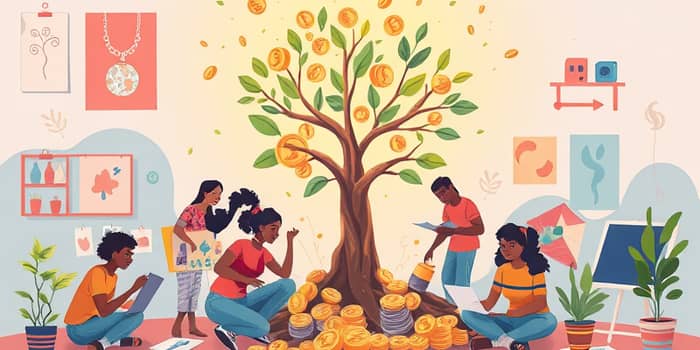
In an era where climbing the career ladder is no longer the sole measure of achievement, individuals are redefining success and financial well-being. Today’s vision goes beyond salary brackets and focuses on holistic fulfillment. This shift is driven by the desire for mental clarity, value alignment, peace of mind and the pursuit of meaningful work.
Bridging the gap between aspiration and security requires understanding current financial realities and adopting strategies that honor personal values. This article offers data-driven insights and practical steps to help you fund your passions while fortifying your future.
Before pursuing passions, it’s essential to grasp the economic headwinds shaping choices. Nearly half of Americans report living paycheck to paycheck, and 45% struggle with unexpected expenses. The stakes are higher for women and communities of color, with 38% of women lacking sufficient emergency savings compared to 25% of men.
Despite these challenges, 58% of young Americans aged 18–35 now integrate financial management into their overall wellness. They view budgeting and saving as integral to self-care, not just chores.
These figures reveal both obstacles and the potential for behavioral shifts. When armed with clear strategies, individuals can transform financial stress into structured progress.
Side hustles have emerged as a powerful lever. In 2025, 31% of people identified side hustles as their number one financial goal. Of those, 41% of Gen Z and Millennials report that these additional income streams significantly improved their financial wellness.
From freelancing to content creation, creative ventures have become more than hobbies. 65% of 18–35-year-olds started or plan to start a side hustle, and the same share intends to continue into the next year. Popular pursuits include jewelry making, writing, gig economy work, and online tutoring.
Financial stress is a leading contributor to anxiety. Roughly 55% of people link their mental and physical wellness directly to their financial state. Communities are stepping up to fill gaps in traditional advice networks, creating spaces for open dialogue. Yet 65% still see money as a private topic.
By engaging with peers and experts, 36% more people seek financial advice than a year ago. This trend reflects a broader desire to be intentional and thoughtful about spending money and to replace secrecy with shared learning.
Despite progress, a confidence gap persists. Women report finances as a source of stress 65% of the time, yet fewer than 20% seek professional advice. Many rely on friends and family, underscoring the need for accessible resources and early financial education.
Bridging this gap involves:
These steps help individuals overcome fear and nurture confidence, empowering them to make informed choices and
close the confidence gap especially for women.
The “passions economy” transforms hobbies into fulfillment and income. Whether crafting jewelry or volunteering locally, people find purpose and often financial return. Meanwhile, philanthropy remains a vital channel for expressing values, with fewer donors making larger, targeted gifts.
Approximately 44% of Americans now conduct spending aligned with their values, simplifying decisions and fostering inner peace. For many, giving is not just charity but a strategy to align money choices with their core values.
As 2025 unfolds, 43% of Americans plan major financial moves aimed at boosting happiness and purpose. Many harbor “secret” financial dreams—whether launching a passion project or achieving independence—yet fear limits disclosure.
To transform aspirations into reality, consider this action plan:
By taking these steps, you can cultivate a lifestyle that blends creativity, security, and well-being. Embrace the journey of pursuing passions through community and purpose while safeguarding your tomorrow.
References





